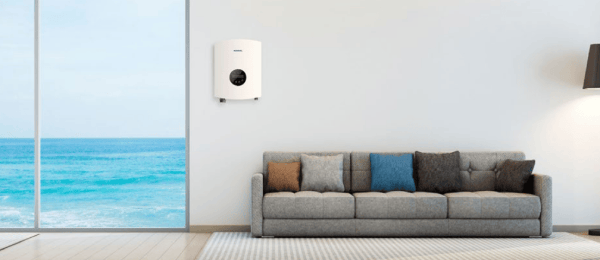Solar power systems rely heavily on inverters to convert DC energy from solar panels into usable AC electricity. Two primary types dominate the market: on-grid and off-grid inverters. Understanding their roles, strengths, and ideal use cases is key to building an efficient solar setup.
On-Grid vs. Off-Grid Solar Inverters: Core Differences
On-grid inverters connect directly to the utility grid. They sync with grid electricity, allowing excess solar energy to be fed back to the grid—often earning homeowners credits via net metering. They don’t require battery storage, making them simpler and more cost-effective for areas with reliable grid access. Off-grid inverters, by contrast, operate independently of the grid, pairing with batteries to store excess energy.
Spotlight: AUXSOL’s On-Grid Inverters for Residential Use
For homeowners with stable grid access, AUXSOL’s single-phase on-grid inverters ASN-(7-10)SL offer a reliable solution. Designed for residential systems, these inverters efficiently convert solar energy, integrate seamlessly with the grid, and support net metering. They boast several key features:
-
High Efficiency: Supports oversizing 1.5x DC/AC and has a 40V low start-up voltage for early startup and more energy generation.
-
Smart: Utilizes ultra-wide grid voltage design with automatic voltage regulation technology, ensuring uninterrupted operation even under unstable grid conditions.
-
User-Friendly: Features a silent design (<35dB).
-
Safe & Reliable: Comes with an IP66 protection rating, adaptable to harsh operating environments, and an intelligent AFCI to reduce fire risk.
-
Economical & Cost-Saving: No power derating at 45°C, making it more reliable with higher yield.
Their compact design and durability make them suitable for rooftops or small-scale setups, balancing performance and affordability.
Key Factors to Consider When Choosing a Solar Inverter
-
Grid Reliability: Opt for on-grid if your area has consistent grid power; choose off-grid for remote or unstable regions.
-
Energy Needs: Match inverter capacity (kW) to your daily electricity usage. AUXSOL’s 7kW-10kW range suits medium to large households.
-
Battery Compatibility: Off-grid systems require inverters that work with your battery type. On-grid models skip this need.
-
Efficiency: Look for high conversion efficiency (95%+) to maximize energy output.
-
Warranty & Durability: Prioritize inverters with long warranties (5–10 years) and weather-resistant builds for longevity.
Frequently Asked Questions
Does a Solar Inverter Use a Lot of Electricity?
No, solar inverters are designed to be energy-efficient. They typically consume 1–3% of the energy they convert, a small amount compared to the overall power generated by the system. High-quality models (like AUXSOL’s) minimize this loss, ensuring most solar energy is used or fed back to the grid.
Final Thoughts
Choosing between on-grid and off-grid inverters depends on your location, energy needs, and grid access. On-grid systems, such as AUXSOL’s 7kW-10kW options, are ideal for grid-connected homes seeking simplicity and cost savings. Pick AUXSOL’s inverter that powers your home efficiently.

